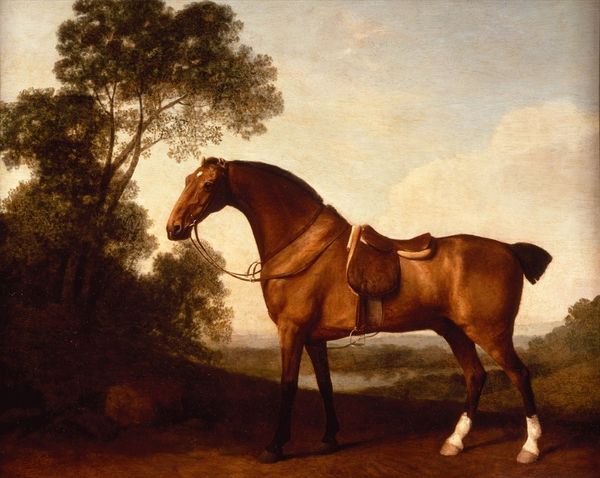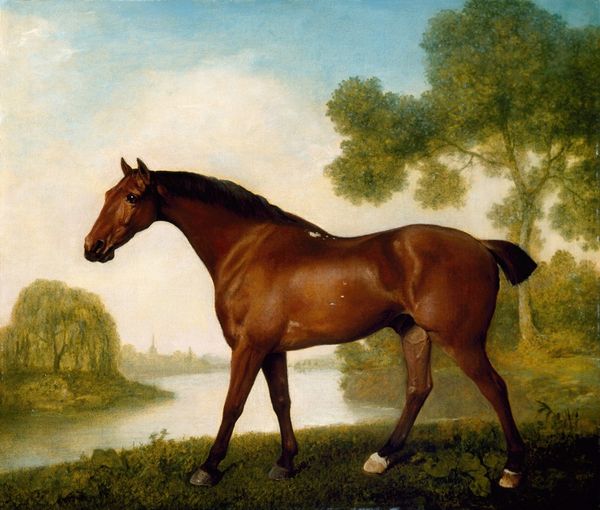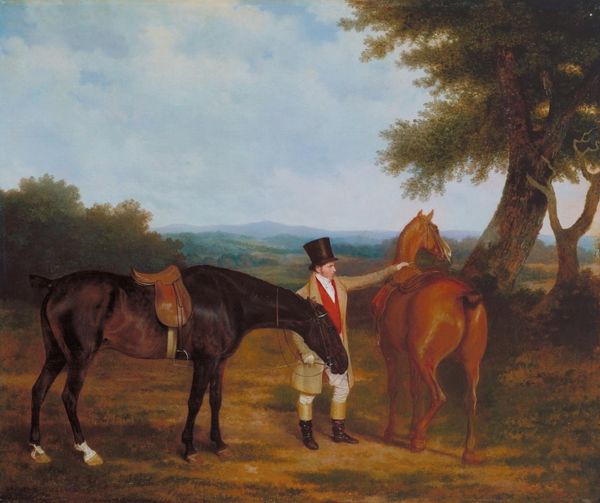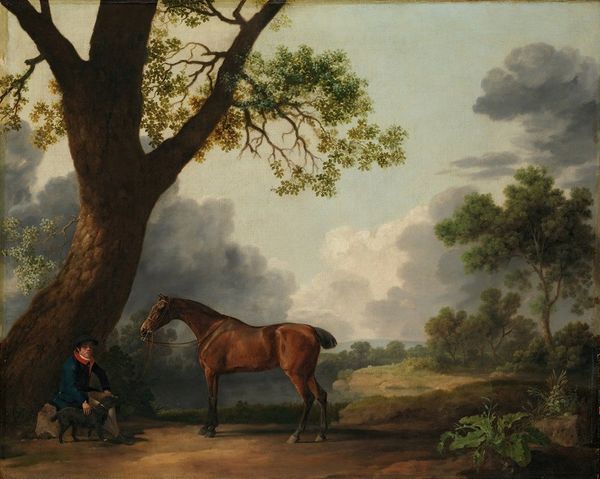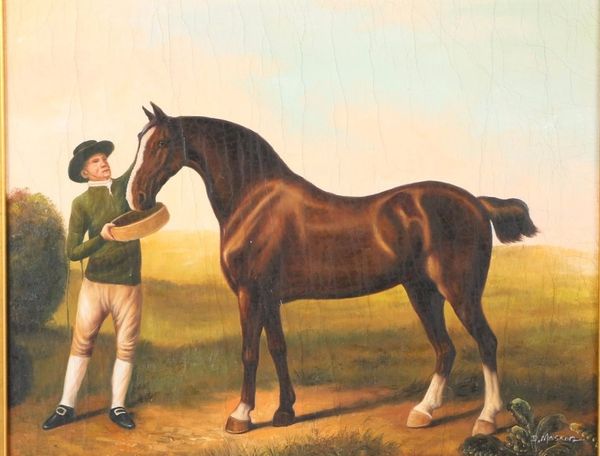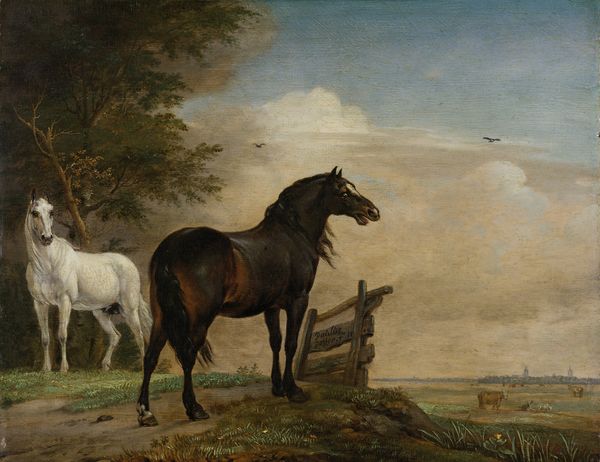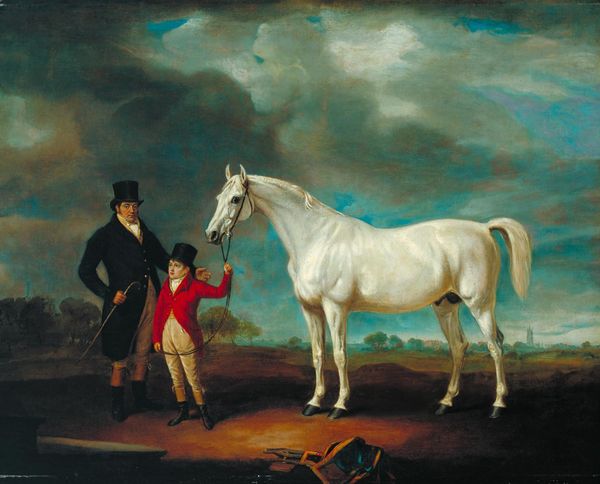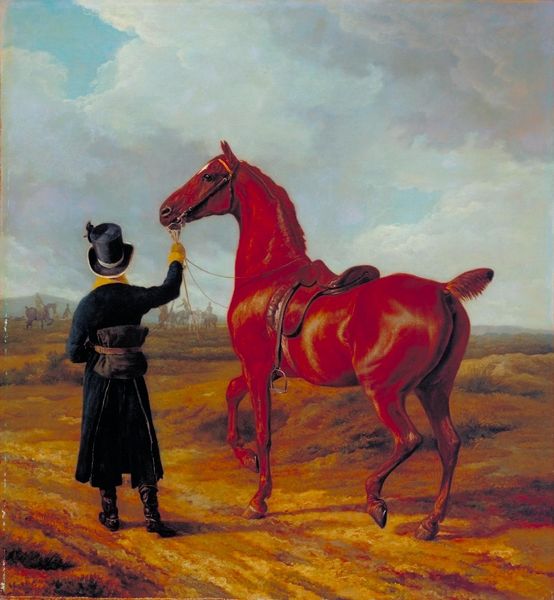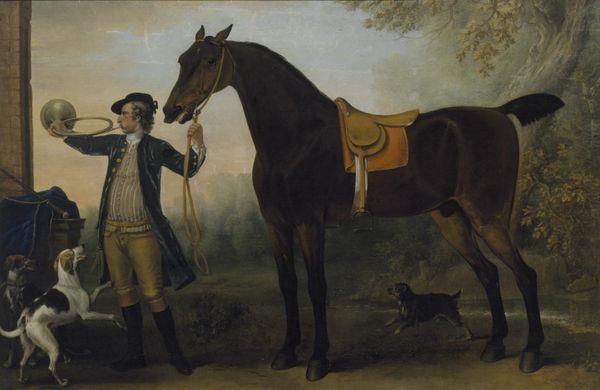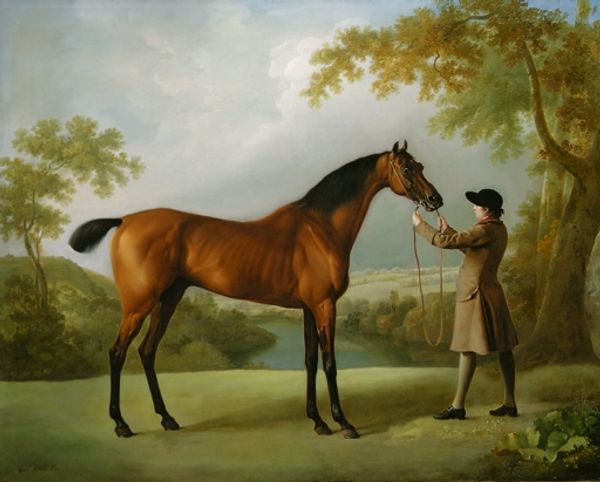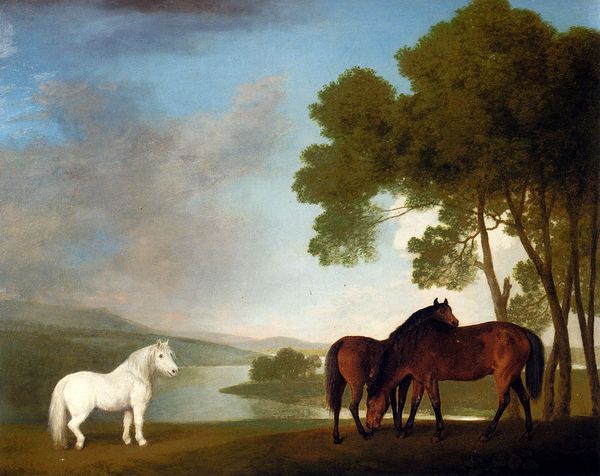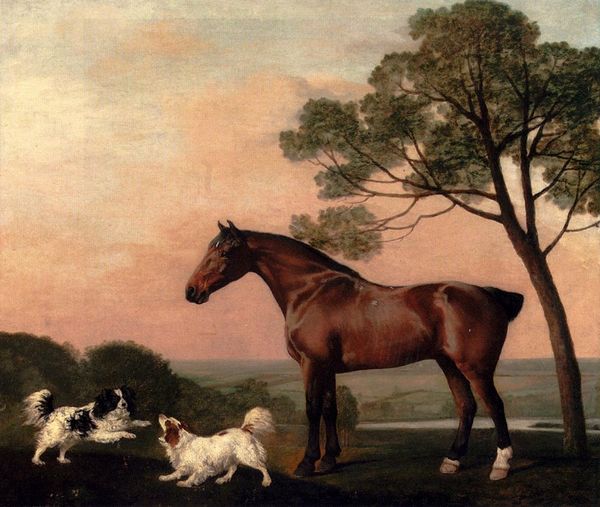
Copyright: Public domain
Editor: Here we have George Stubbs' "Lord Grosvenor's Arabian Stallion with a Groom," painted around 1765 using oil. There's something about the formal pose of both the man and the horse that strikes me as very self-conscious. What do you see in this piece? Curator: Well, beyond the obvious display of wealth and status, I see a careful construction of symbols. Think about the Arabian horse itself; it represents exoticism, power, and lineage. The controlled landscape, almost theatrical, hints at man's dominion over nature. Does that resonate with you? Editor: Yes, I see that. The horse and man almost mirror each other. Is it just a painting of a horse, or is it making a broader statement about society? Curator: It's a carefully calibrated message. Consider the period; the Enlightenment was in full swing. There’s an embrace of reason and order, but also a fascination with the 'exotic' Other. The Arabian horse, in that sense, embodies that tension. Think of the colours Stubbs has chosen and where he places his subjects in the space - it's clearly not casual. How does this relationship of horse, man, and nature strike you in that light? Editor: So, it is all these layers working together—reason and nature and status – revealing cultural values and tensions, if I understand. The horse embodies the power of nature under man’s rational hand? Curator: Precisely. And Stubbs, a master anatomist, uses scientific precision to underscore that message. Do you notice any symbolic connection with the tree? Editor: Interesting. Thank you; now, looking closely at how Stubbs posed his subjects, the painting says a lot more about cultural aspirations and values. Curator: Exactly. It reminds us that every image carries with it a complex history and network of symbols.
Comments
No comments
Be the first to comment and join the conversation on the ultimate creative platform.
